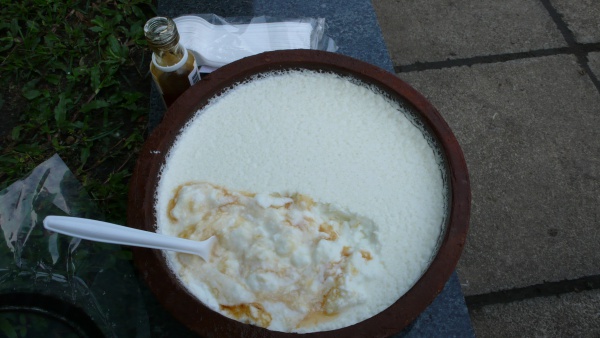Facts About Buffalo curd
Dahi is a traditional yogurt or fermented milk product originating from the Indian subcontinent. Typically made from cow, buffalo, or goat milk, it is a staple throughout the region. In English, homemade yogurt is often called "curd" while "yogurt" generally refers to the commercial, pasteurized type known as heat-treated fermented milk.
The process of making dahi involves bacterial fermentation, during which the lactose in the milk is transformed into lactic acid by beneficial bacteria such as Lactococcus lactis, Streptococcus diacetylactis, Streptococcus cremoris, Lactobacillus delbrueckii subsp. bulgaricus, and Streptococcus thermophilus. Sometimes, dried red chilies are added to the starter mix because they contain lactobacilli that aid in fermentation. The process begins by boiling the milk, allowing it to cool, mixing it with the starter culture, and then letting it ferment for several hours.
Buffalo curd is a rich and creamy yogurt made from water buffalo milk, which has a higher fat content than cow's milk. Made similarly to dahi, it results in a thicker consistency. Buffalo curd can be prepared either traditionally or industrially and is often sold in clay pots. It is a cherished dairy product throughout the Indian subcontinent.
Dahi is an essential ingredient in many regional dishes, used in both slow-cooked meals and fast food. In slow-cooked dishes, dahi can be found in curd rice, curd curry, fish in curd curry, coconut chutney, and raita, among others. For fast food, dahi stars in dishes like dahi vada, lassi, chaas, papri chaat, dahi puri, aloo tikki, and mishti doi. These dishes underscore the versatility and significance of dahi in the culinary traditions of the Indian subcontinent.

 China
China